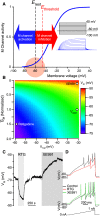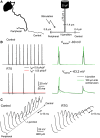M-type K+ channels in peripheral nociceptive pathways
- PMID: 28800673
- PMCID: PMC5980636
- DOI: 10.1111/bph.13978
M-type K+ channels in peripheral nociceptive pathways
Abstract
Pathological pain is a hyperexcitability disorder. Since the excitability of a neuron is set and controlled by a complement of ion channels it expresses, in order to understand and treat pain, we need to develop a mechanistic insight into the key ion channels controlling excitability within the mammalian pain pathways and how these ion channels are regulated and modulated in various physiological and pathophysiological settings. In this review, we will discuss the emerging data on the expression in pain pathways, functional role and modulation of a family of voltage-gated K+ channels called 'M channels' (KCNQ, Kv 7). M channels are increasingly recognized as important players in controlling pain signalling, especially within the peripheral somatosensory system. We will also discuss the therapeutic potential of M channels as analgesic drug targets.
Linked articles: This article is part of a themed section on Recent Advances in Targeting Ion Channels to Treat Chronic Pain. To view the other articles in this section visit http://onlinelibrary.wiley.com/doi/10.1111/bph.v175.12/issuetoc/.
© 2017 The Authors. British Journal of Pharmacology published by John Wiley & Sons Ltd on behalf of British Pharmacological Society.
Figures




References
Publication types
MeSH terms
Substances
Grants and funding
LinkOut - more resources
Full Text Sources
Other Literature Sources

